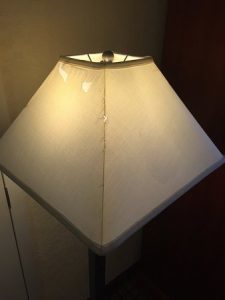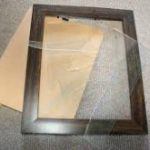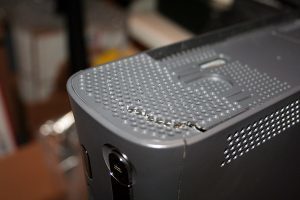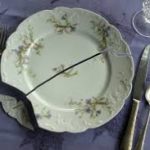Top Damaged Items Part 1
When it comes to moving, items sometimes get damaged. It’s never fun to open a box and see some of your valuable items broken. Below are some of the top damaged items and how to prevent the damage.
Lampshades
They’re an awkward shape, difficult to pack, and easily dented or torn if not packed correctly. Use packing paper to fill the bottom of the box, and fill the inside of the shade. Then wrap the shade in bubble wrap before placing it in the box. After that, use more packing paper to fill in all the gaps inside the box and on top of the lampshade.

Artwork & Photo Frames
If the glass breaks, it typically causes more damages the frame because of its sharp edges. This usually happens because there was not enough cushion around the frame and in the box. To prevent this, line the bottom of the box with plenty of packing paper. Additionally, wrap the piece of artwork in bubble wrap and place the artwork in the box. Fill all sides of the box with packing paper and fill the top of the box with packing paper. Over-filling, the top of the box with packing paper, is recommended. This ensures the box doesn’t break down if another box is placed on top of it.

Figurines
Usually an awkward shape, very delicate, and easily broken. Use tissue paper to wrap the item several times. When you think you have wrapped the item sufficiently, wrap it in tissue paper a few more times. Then cover the item in packing paper. Fill the bottom of a box with packing paper at least 2-3 inches before placing items in the box. Fill in all sides, and the top of the box with packing paper after all things are in the box.

Electronics
Items such as computers, stereo components, and televisions are susceptible to damage. This is mainly due to the displacement of functional components inside the item. The typical cause is because not enough packing material was used when packing the item. This movement, along with the regular vibration of transit, often causes the internal component damage. When packing electronic items in a box, line the bottom of a box with 2-3 inches of packing paper. Wrap the item in bubble and place in the box, then fill in all sides and top of the box with more packing paper. Before sealing the box, perform a mini-test by gently shaking the box side-to-side and up-and-down to see if the item has any movement inside the box. If it does, continue adding packing paper until the item will no longer move when you test it.

Dishes & Fine China
Usually broken due to packing many items together without enough packing. For instance, packing four plates together with no packing between each plate. Although the items appear as if they can be placed together and wrapped together as a set, this is not a safe practice. It’s best to wrap each plate, saucer, serving dish, etc., thoroughly with packing paper before placing in the box. Make sure the box is lined with 3-4 inches of packing paper, and the sides and top are filled with packing paper when ready to seal.

The list above are recommendations from a moving company claims adjuster, and these are some of the items people try to pack themselves that we see getting damaged during moves. We hope these recommendations can help prevent some damages during your move.